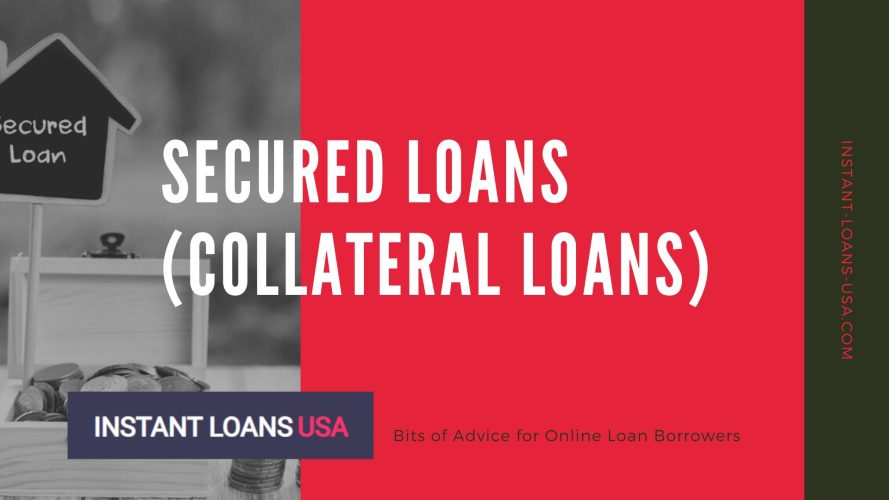
Many consumers choose loans, which are available in two varieties: secured and unsecured. However, the distinctions between the two aren’t always obvious.
Unsecured loans do not require collateral, but secured loans must. Additionally, because secured personal loans pose less risk to the lender, they are often easier to qualify for and have lower interest rates. However, if you can’t repay the money you borrow, they might not be the greatest option for you and could seriously harm your finances and credit.
Personal loans that are secured allow you to borrow money using the value of an asset, such as a car or savings. Although secured finance may have cheaper interest rates, they come with risk. Since personal loans tend to be unsecured, your creditworthiness will determine whether you are approved. However, a secured loan is an option if you can’t be approved for an unsecured loan or you can’t receive the rate you desire on a loan for people with terrible credit. You must put up property as collateral for this form of loan in order to obtain financing. The drawback is that the lender may confiscate your asset if you don’t make timely payments.
How does a secured loan operate? What is it?
Secured loan bad credit is a debt instrument that is backed by an asset. This implies that the lender will want to know which of your assets you intend to use to back the loan when you apply for a secured loan. The asset will subsequently become subject to a lien from the lender until the loan is fully repaid. The lender can seize the collateral and sell it to recuperate their loss if you don’t make payments on the loan. Before you take out secured loans for bad credit, it’s critical to understand exactly what you are promising and what you stand to lose.
What is a personal secured loan?
A secured personal loan is a loan that you obtain by putting up collateral and receiving a sum of money that you must pay back over time with interest. In the event that you default on the loan, lenders have the authority to seize your collateral, such as a car or money in a savings account. The lender loses the right to claim the collateral after the loan is fully repaid.
Your credit, income and previous debts still play a major role in getting approved for bad credit secured loans, just like they do for an unsecured one, but providing collateral reduces the risk to the lender. As a result, secured loans have higher approval rates and generally cheaper interest rates.
Obtaining a secured personal loan
Depending on the kind of collateral you use, the procedure for obtaining the best secured loans may change, however, the following are some of the stages you must follow:
- Get the information about the loan. Some lenders only provide secured loans to applicants who do not already meet the requirements for an unsecured loan. Ask the lender about secured loans if you can’t pre-qualify with them or if you don’t see a secured loan choice.
- Do a budget check. Examine your financial flow to determine how much you can afford to pay each month toward the loan. To determine the annual percentage rate, loan size, and duration you’d need to keep monthly payments manageable, use a personal loan calculator.
- Select a lender. Check out different lenders to compare their rates and the types of collateral they allow.
- Gathering of papers. Gather the documentation that most lenders require for an application before you submit one. A government-issued ID, bank statements, and pay stubs are a few examples. You might also require collateral documents, such as a car title.
- Apply. Online applications are available for most lenders. Once you submit, a lender’s judgment on approval could take a few days or more if they need to determine the value of the collateral.
What kinds of collateral support secured loans?
The best and frequently the only option to get huge sums of money is through a secured personal loan with bad credit. As long as it is permitted by law, almost anything can be used as collateral. Lenders prefer assets that are simple to seize and convert into cash. Whether you are using the loan for personal or business purposes will probably affect what you put up as collateral.
What happens if you don’t pay back a secured loan?
A secured loan lender will probably take possession of the collateral after a few late payments. The lender is not required to notify you of the repossession in many states. Even worse, the issue is not resolved with repossession. You are liable for the difference if the sold item does not bring in enough money to pay off the loan.
For instance, if you owe $20,000 on a loan when you stop making payments and the asset is repossessed and sold for $15,000, you will still be responsible for paying the lender the remaining $5,000 as well as any unpaid fees. Your credit report shows the repossession for seven years.
The Bottom Line
If secured loan interests you, check your credit first to see where you are and whether you’re likely to be eligible for the most competitive interest rates. After that, look out for reliable lenders and apply for pre-qualification to view rates for secured loans without having your credit score affected. Submit a formal application when the loan has been granted. Prior to the loan being authorized, it’s also a good idea to revise your budget to avoid falling behind on payments and maybe losing your collateral. As long as you make your monthly payments on time, secured loans can be beneficial even if they do carry higher risks than unsecured loans.